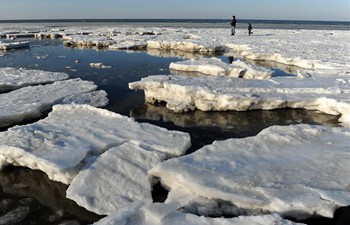NEW YORK, Jan. 7 (Xinhua) -- The remains of an ancient infant who died some 11,500 years ago in what is now the northern U.S. state of Alaska is providing better evidence that all Native Americans can be traced back to the same population migrated from East Asia, a new study has revealed.
The female infant, which was between six and 12 weeks old when she died, was unearthed in a burial pit in the Tanana River valley in central Alaska in 2013. Analysis of her DNA indicated that the child was from a previously unknown population of Native Americans, which scientists dubbed "Ancient Beringian."
It has long been believed that a group of people migrated from East Asia through Beringia, a now-submerged land bridge that once linked Siberia and Alaska, to form the first population of ancestral Native Americans. Yet the details of the migration are unresolved.
The new study, published recently in the journal Nature, suggests that the ancestors of the infant started their east-bound journey from East Asia about 35,000 years ago and completed their separation from Asians by about 25,000 years ago as they spent thousands of years in isolation, either in Beringian or Asia.
During that time, the migrants split into two populations about 20,000 years ago: one stayed in Beringia, and the other entered into the Americas and became the direct ancestors of today's Native Americans, according to the paper.
The infant is the first evidence of the existence of the Ancient Beringians.
"It changes our understanding of the timing of events that formed the genetics of Native Americans," said Eske Willerslev, co-author of the study and professor at the University of Copenhagen.

















